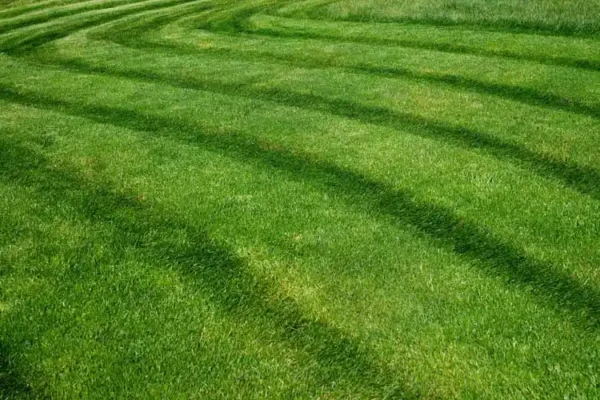You can water your lawn after mowing, but be careful not to overdo it or water when the sun is strongest, as this can cause pests, scorching, or diseases. It’s important to ensure that the soil has cooled down and is ready to absorb water effectively. We suggest evaluating watering needs independently of mowing.

When to Water After Mowing
Mowing can make your grass more susceptible to stress, but adding extra water isn’t always the solution. Only water if it’s in line with your normal schedule or if your lawn appears to be lacking moisture. Signs of dehydration include:
- Discoloration: Yellow or brown patches on grass indicate dehydration.
- Crisp Grass: Grass blades become dry, brittle, or limp when lacking moisture.
- Persistent Footprints: Footprints that remain visible longer than usual suggest dry soil.
- Cracked Soil: Dry, cracked soil shows that the lawn is not receiving enough water.
These signs indicate your lawn could use extra hydration, especially after mowing. If you choose to water, wait until the afternoon when the sun is less intense to prevent scorching the grass.
Need Lawn Care? We Can Help.
Click the button below to leave your information & we'll be in touch in an hour or less.
Need Pest Control Service?
Leave your information below and we’ll be in touch with a FREE quote!
"*" indicates required fields
*During normal business hours. After hours calls will be returned the next business day.
Why Is My Grass Wilting After Mowing?
A good watering schedule is just one part of a healthy lawn care routine. If your grass appears damaged or unhealthy after mowing, there might be other issues at play. Some possible causes for wilted grass after mowing include:
- Mowing Too Often: Mowing every week may be too much if your grass grows slowly. Frequent mowing stresses your lawn, so it’s best to mow only when it gets noticeably overgrown.
- Dull Mower Blades: Blunt blades rip the grass rather than providing a clean cut. If you haven’t changed your mower blades in over a year, it’s time for a replacement to help your lawn recover faster.
- Using Too High of a Setting: High mower settings can be too harsh for your lawn, leading to scalped areas. Adjusting the height will prevent bald spots and allow your turf to recover more quickly.
- Mowing Wet Grass: Wet grass is heavy and bends under the mower, increasing the risk of tearing the blades. Mowing while wet makes it harder for the lawn to recover.
- Trimming the Grass Too Short: Cutting grass too short can cause it to dry out and struggle to regrow. Keep the grass height between 2 ½ to 3 inches to ensure healthy growth and photosynthesis.
If you’re still unsure why your lawn isn’t thriving after mowing, Bug Out is ready to help. Our experienced lawn care experts in Florida can enhance your routine and ensure healthy grass year-round.
